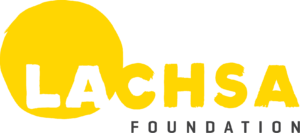For many young people, teaching artists (like their arts teachers) are the first people who certified their passion for writing, or their tentative steps to being a dancer. A teaching artist may have escorted them out of the neighborhood, onto a bus, and downtown to their first-ever play or lent them a world class trumpet to audition for a jazz summer camp (Wolf & Rodriguez Pineda, 2019). Teaching artists are walking embodiments of the possibility that many people—with many languages, histories, and ethnicities—can be artists. In classrooms, after-school programs, and parks, they invent “third spaces” between home and school where it’s possible to forge complex, intersectional identities (Guttiérrez, 2008). Teaching artists, along with their arts teacher colleagues, carry the work of theaters, museums, and writing projects into unpredictable, under-served classrooms, afterschool programs, or vacation and summer camps. In that sense they are the first responders in a crisis where access to realizing your creativity is too reliably predicted by income and address.

Yet, despite being essential workers in the arts, teaching artists have been hit hard by the COVID-19 shuttering of cultural institutions, regularly having their hours reduced or being furloughed indefinitely. In a now infamous email, the Museum of Modern Art told its museum educators “it will be months, if not years, before we anticipate returning to budget and operations levels to require educator services.” These losses come at a particularly sensitive time. Predictions about post-pandemic school budgets all forecast deep spending cuts which are likely to affect funding for arts education partnerships of all kinds including long-term residencies, field trips, and assembly programs. And, in the background, changing state employment laws may soon call upon cultural organizations (and others) to treat free-lance artists as employees, winning them new rights and benefits, but also making them 20 – 30% more expensive to hire, thus potentially shrinking the number of positions organizations can afford. The issues are long-standing and complex: teaching artists have always juggled the trade-offs between artistic autonomy and flexibility of worker-at-will on the one hand and the protections and security of employee status. But in spring of 2020 that balancing act has become a knife’s edge: this is the moment for work that is more respectful, collaborative, and hefty.
Read the full article By Dennie Palmer Wolf with contributions from
Courtney J. Boddie and Lindsey Buller Maliekel, New 42
Victoria Row-Traster, Miami Theater Center
Stanford Thompson, Play On Philly
Dr. Dennie Palmer Wolf, Principal Researcher at WolfBrown, is one of the leading arts education researchers and evaluators in the United States. She holds a doctorate from Harvard where she served as a researcher at Project Zero for more than a decade and then headed Harvard PACE, an initiative linking schools and external partners in new approaches to assessing student learning. She led studies on the early development of artistic and symbolic capacities and later focused on design, implementation, and evaluation strategies that help cultural organizations and communities examine and improve how people gain access to learning, culture, and creativity both in and outside of formal institutions. Nationally, Wolf has helped a number of city-wide and regional consortia build coordinated systems that support critical and creative learning for young people in and out of school time, in cities as varied as Boston, Chicago, Dallas, and Portland, OR. Based on this work, Wolf conducted a strategic review of all aspects of arts education for the National Endowment for the Arts. She was a three-term appointee to the National Assessment Governing Board, the federal agency that measures student learning nationally. Her work has been supported by the National Endowment for Arts, the U.S. Department of Education, the Buck, Arnold, Carnegie, Mellon, Spencer, and William Penn foundations, and has appeared in numerous peer-reviewed journals and books.








